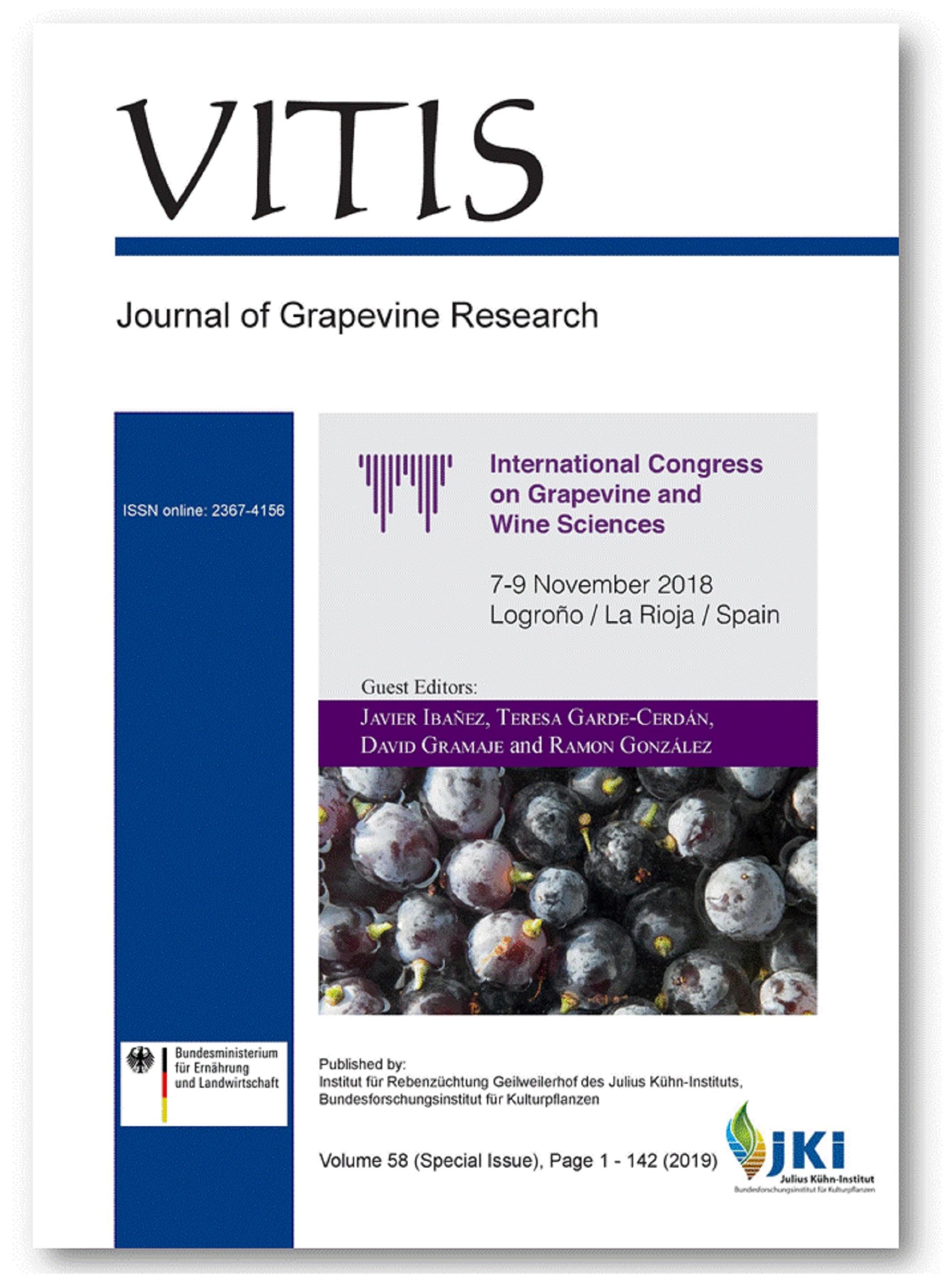Influence of two prefermentative treatments to reduce the ethanol content and pH of red wines obtained from overripe grapes
DOI:
https://doi.org/10.5073/vitis.2019.58.special-issue.59-67Keywords:
climate change; ethanol reduction; pH reduction; red winemaking.Abstract
This study researches treatments for reducing the ethanol content and pH of wine, by either adding or replacing a portion of overripe red grape juice with acidified water or with a white grape juice of low potential ethanol content previously treated with cationic exchange. All treatments resulted in wines with lower ethanol content; however, the treatments did not always correct wine acidity effectively and sometimes the wine composition was negatively affected because the other wine components were diluted. Specifically, both adding and substituting with acidified water caused an increase in wine pH and a general dilution of the other wine components, particularly when the water was added. In contrast, adding acidified must, unlike acidified water, significantly reduced wine pH and the dilution effect was lower, especially when a portion of the original must was replaced by a low sugar content white must treated by cationic exchange. Moreover, this practice is not unauthorized and seems not to affect, but rather improve, the sensory quality of the wine.
Downloads
Published
Issue
Section
License
The content of VITIS is published under a Creative Commons Attribution 4.0 license. Any user is free to share and adapt (remix, transform, build upon) the content as long as the original publication is attributed (authors, title, year, journal, issue, pages) and any changes to the original are clearly labeled. We do not prohibit or charge a fee for reuse of published content. The use of general descriptive names, trade names, trademarks, and so forth in any publication herein, even if not specifically indicated, does not imply that these names are not protected by the relevant laws and regulations. The submitting author agrees to these terms on behalf of all co-authors when submitting a manuscript. Please be aware that this license cannot be revoked. All authors retain the copyright on their work and are able to enter into separate, additional contractual arrangements.



